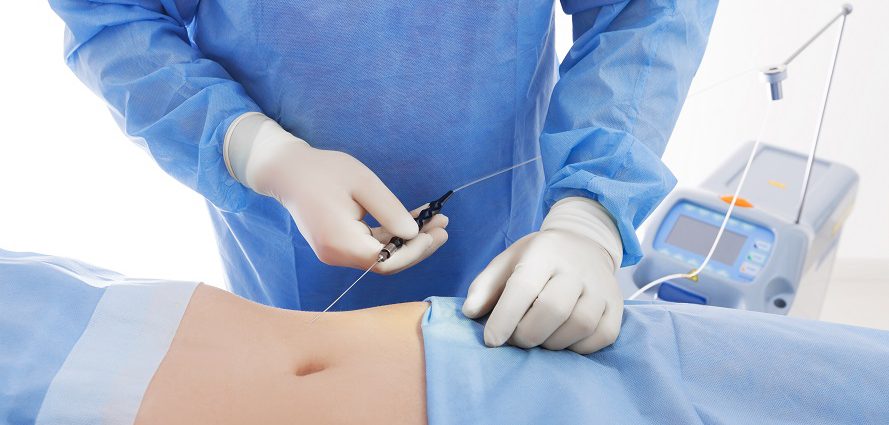Minimally invasive vs. traditional liposuction: pros and cons is a hot topic for anyone considering body contouring. Each method has its unique benefits and drawbacks, impacting recovery time, results, and overall experience. Traditional liposuction is known for its effectiveness in larger fat removal but often comes with longer recovery periods and more risks. On the flip side, minimally invasive techniques promise quicker healing and less discomfort. However, they may not deliver the same dramatic results as traditional methods. Understanding these differences can help you make informed choices about your body goals. Dive into the details of body shaping to discover which fat reduction techniques align best with your needs and lifestyle, including surgical liposuction and other liposuction techniques.
Key Takeaways
- Traditional liposuction is effective for larger fat removal but involves longer recovery times compared to minimally invasive methods.
- Minimally invasive techniques, like tumescent liposuction, offer quicker recovery and less discomfort, making them suitable for those with busy lifestyles.
- When considering costs, remember that while traditional liposuction may seem cheaper initially, the longer recovery could lead to additional expenses.
- Each method has its pros and cons; evaluate your body type and desired results to choose the right technique for you.
- Always consult with a qualified surgeon to discuss your options and ensure you understand the risks and benefits of each method.
- Stay informed about the latest advancements in liposuction to make the best decision for your health and aesthetic goals.
Understanding Liposuction Techniques
Traditional Methods
Traditional liposuction is a surgical liposuction technique. It uses larger incisions to remove fat. Surgeons insert a cannula, which is a thin tube, into the body. This method, including suction lipo and other fat reduction techniques, can lead to more visible scarring and longer recovery times. Patients often face swelling and bruising after the procedure.
This technique focuses on fat removal from specific areas. Common target areas include the abdomen, thighs, and arms. The procedure can provide significant results in body contouring. However, it may require general anesthesia, increasing risks.
Minimally Invasive Techniques
Minimally invasive liposuction methods have gained popularity due to advancements in liposuction technology. Techniques like VASER and laser-assisted liposuction are examples of these modern approaches. They use smaller incisions for lipo suction, leading to less scarring and quicker recovery.
These methods utilize ultrasound or laser energy to break down fat cells before removal. This process reduces trauma to surrounding tissues. Patients experience less pain and discomfort compared to traditional lipo methods using suction.
The goal remains the same: effective fat removal and improved body shape. Many patients prefer minimally invasive techniques like lipo and suction for their lower risk profile.
Technological Advancements
Technological advancements have transformed liposuction procedures over the years. New lipo devices allow for more precise suction targeting of fat deposits. These innovations enhance the liposuction results while minimizing damage to surrounding areas.
For example, VASER technology uses ultrasound waves to liquefy fat. This makes lipo easier to suction out without harming nearby tissues. Similarly, laser-assisted techniques melt fat using focused light energy.
These advancements in suction lipo lead to shorter recovery times and fewer complications. Patients can often return to normal activities sooner than with traditional methods.
Common Goals
Both traditional and minimally invasive liposuction share common goals. Both aim for effective fat removal and improved body contouring. Patients seek these procedures, such as suction lipo, to enhance their appearance and boost confidence.
Regardless of the method chosen, surgeons assess individual needs first. They discuss options based on desired outcomes, health status, lifestyle factors, lipo, and suction.
In summary, understanding these different liposuction techniques helps patients make informed decisions about their bodies. Each method has its pros and cons, but technology, including suction lipo, continues to drive improvements in safety and effectiveness.
Basics of Traditional Liposuction
Surgical Process
Traditional liposuction procedures involve a few key steps. The process starts with anesthesia. Surgeons typically use general or local anesthesia to minimize discomfort. After the patient is ready, they make small lipo incisions in the targeted areas. These incisions allow access to the fat beneath the skin.
Surgeons insert a thin tube called a cannula through these incisions. The cannula helps to break up and suction out fat cells. This fat removal procedure can take several hours, depending on the amount of fat being removed. Recovery time varies, but most patients can return to normal activities within a few weeks.
Types of Procedures
There are several traditional liposuction methods available. Tumescent liposuction is one of the most common types. In this method, surgeons inject a saline solution mixed with anesthetic into the treatment area. This solution helps to numb the area and makes it easier to remove fat.
Ultrasound-assisted liposuction is another option. This technique uses sound waves to liquefy fat before suctioning it out. It can be beneficial for removing larger volumes of fat or for targeting specific areas. Each type has its advantages and disadvantages.
Importance of Skilled Surgeons
Choosing a skilled surgeon is crucial for successful outcomes in traditional liposuction surgery. A qualified surgeon understands the anatomy and techniques required for optimal results. They ensure safety during the procedure and help minimize complications.
Patients should research potential surgeons carefully. Checking credentials and experience is essential. Reviews from previous patients can provide insight into a surgeon’s skill level. A well-trained professional can significantly affect recovery time and overall satisfaction with the results.
Pros and Cons
Traditional lipo has its pros and cons.
Pros:
- Effective for significant fat removal.
- Long-lasting results when combined with a healthy lifestyle.
- Can treat various body areas.
Cons:
- Longer recovery period compared to minimally invasive options.
- Possible side effects include swelling, bruising, or infection.
- Requires general anesthesia in many cases.
Understanding these factors can help individuals make informed decisions about their body contouring options.
Overview of Minimally Invasive Methods
Laser-assisted Liposuction
Laser-assisted liposuction is a popular choice. It uses laser technology to target fat cells. The laser energy heats and breaks down the fat, making it easier to remove. This method requires smaller incisions compared to traditional techniques.
Patients often experience less pain during recovery. This is due to reduced tissue damage. Anesthesia may still be used, but the need for general anesthesia is lower. Many individuals appreciate this method for its effectiveness and minimal scarring.
Ultrasound-assisted Liposuction
Ultrasound-assisted liposuction is another option. This technique employs ultrasound waves to liquefy fat before removal. The sound waves penetrate the skin, targeting fat cells without harming surrounding tissues.
This method also involves smaller incisions. Surgeons can use local anesthesia instead of general anesthesia in many cases. Patients benefit from a quicker recovery time and less bruising.
Advantages of Minimally Invasive Techniques
Minimally invasive methods offer several advantages over traditional liposuction. One major benefit is reduced scarring. Smaller incisions lead to less visible marks on the skin after healing.
Another advantage is faster recovery times. Many patients return to daily activities within a few days. Traditional methods often require weeks for full recovery. This appeals to those with busy lifestyles.
Patients also report less discomfort with these advanced techniques. Since there is minimal tissue damage, pain levels are often lower than with traditional procedures.
Considerations
While minimally invasive methods have many benefits, they may not be suitable for everyone. Individuals with larger fat deposits may still require traditional liposuction for optimal results.
Cost can also be a factor. These advanced technologies may come at a higher price than standard methods. Patients should weigh their options carefully and consult with a qualified surgeon.
Surgeons will evaluate each patient’s unique situation before recommending a method. Factors like body type, health history, and desired outcomes play important roles in this decision.
Comparing Effectiveness and Safety
Effectiveness
Minimally invasive liposuction techniques, such as tumescent liposuction, often provide similar fat removal results as traditional methods. Studies show that both types can remove significant amounts of fat effectively. However, minimally invasive techniques typically target smaller areas. This approach allows for more precision in fat removal.
Patients may experience quicker recovery times with minimally invasive methods. Traditional liposuction can lead to larger incisions and more trauma to the body. As a result, patients undergoing traditional procedures might need more time off work and activities.
Safety Profiles
Safety is crucial when considering any surgical procedure. Traditional liposuction carries risks like infection, blood clots, and anesthesia complications. These risks increase with the volume of fat removed during surgery.
On the other hand, minimally invasive techniques generally have a better safety profile. They involve smaller incisions and less disruption to surrounding tissues. This leads to fewer complications overall. Patients report lower levels of pain and swelling after minimally invasive procedures.
However, it’s essential to note that no procedure is without risk. Some complications can still occur, such as contour irregularities or fluid accumulation. Proper patient selection plays a vital role in minimizing these risks.

Patient Satisfaction
Patient satisfaction rates vary between the two methods. Many patients who undergo minimally invasive liposuction report high satisfaction levels due to less discomfort and quicker recovery times. They appreciate the ability to return to normal activities sooner.
Traditional liposuction also has its share of satisfied patients. Those who need larger areas treated may find traditional methods more effective for their needs. Long-term results can be similar for both techniques, depending on individual circumstances.
Surveys indicate that patients value the recovery experience and overall results when evaluating satisfaction. Both methods can yield positive outcomes if performed by experienced surgeons.
Long-term Results
Long-term results depend on various factors, including lifestyle choices post-surgery. Maintaining a healthy diet and exercise routine is crucial for sustaining results from either method.
Research indicates that both traditional and minimally invasive liposuction can deliver lasting changes in body shape. However, patients must remain committed to their health after surgery for optimal results.
Recovery and Downtime Differences
Traditional Recovery
Traditional liposuction typically requires a longer recovery time. Patients often need about two weeks to start feeling normal again. During this period, swelling and bruising are common. The post-operative care involves wearing compression garments. These help reduce swelling and support the healing process.
Surgeons usually recommend resting for the first few days. Patients should avoid strenuous activities for at least three to four weeks. Many return to work within a week, but full recovery can take several months.
Minimally Invasive Recovery
Minimally invasive liposuction offers much shorter downtime. Procedures like tumescent liposuction or laser-assisted techniques often allow patients to resume daily activities within a few days. Some even return to work within 24 to 48 hours.
These methods use smaller incisions and less anesthesia. This results in less trauma to the body and quicker healing times. Patients may still experience some swelling, but it is generally less severe than with traditional methods.
Influencing Factors
Individual recovery experiences can vary significantly. Factors such as age, overall health, and lifestyle play a crucial role. Younger patients often heal faster than older individuals. Good health can also lead to quicker recoveries.
For example, someone who exercises regularly may find their recovery smoother. On the other hand, patients with underlying health issues might face longer downtimes. It’s essential for each patient to discuss their unique situation with their surgeon.
Cost Considerations
Treatment Costs
Costs for liposuction vary significantly. Traditional liposuction tends to be more expensive than minimally invasive options. The average cost for traditional procedures can range from $3,000 to $7,000. This amount often includes anesthesia, facility fees, and surgeon fees.
Minimally invasive procedures might start lower, around $2,000 to $5,000. Factors such as the technology used and the surgeon’s experience affect these prices. Patients should understand that while upfront costs are important, they are not the only consideration when deciding on a treatment option.
Number of Sessions
The total expenses can increase based on the number of sessions required. Traditional liposuction typically involves one session to achieve desired results. However, some patients may require additional sessions for optimal outcomes.
In contrast, minimally invasive methods might need multiple treatments. Each session adds to the overall cost. Patients must consider their goals and how many areas they want to treat. More areas treated or more sessions needed will lead to higher expenses.
Insurance Coverage
Insurance coverage remains a crucial factor in determining costs. Most insurance plans do not cover cosmetic procedures like liposuction. However, if the procedure is deemed medically necessary, there may be some coverage options available.
Patients should consult with their insurance providers to understand their specific policies regarding liposuction. In some cases, financing options may also be available through clinics or third-party lenders. These options can help manage out-of-pocket costs.
Financing Options
Many clinics offer financing plans for liposuction procedures. These plans allow patients to pay in installments rather than a lump sum. This can make the procedure more accessible for those concerned about immediate costs.
e facilities provide promotional offers or payment plans with low-interest rates. Patients should inquire about these options during their initial consultation. Understanding all financial aspects helps patients make informed decisions.
Potential Complications
Both traditional and minimally invasive liposuction carry risks and complications. Traditional procedures may have higher complication rates due to their invasive nature. Risks include infection, scarring, and prolonged recovery time.
Minimally invasive techniques generally have fewer complications but are not entirely risk-free. Patients need to weigh the pros and cons of each method carefully before proceeding. A thorough consultation with a board-certified surgeon is essential for discussing potential risks and expected outcomes.
Suitability for Different Body Types
Body Type Considerations
Certain body types may benefit more from traditional liposuction. Individuals with larger fat deposits often see better results with this method. Traditional techniques remove significant amounts of fat at once. This makes it suitable for those who want noticeable changes in body shaping.
Minimally invasive liposuction works well for individuals with smaller, localized fat areas. This method uses smaller incisions and less anesthesia. It is ideal for people looking to refine their shape rather than make drastic changes.
Skin Elasticity Impact
Skin elasticity plays a crucial role in choosing the right procedure. Those with good skin elasticity may find success with minimally invasive options. Their skin can adjust better after the removal of fat cells.
Conversely, individuals with poor skin elasticity might prefer traditional liposuction. The larger incisions allow for more extensive fat removal. This can lead to a smoother appearance when skin does not tighten as effectively.
Fat Distribution Factors
Fat distribution affects which method is best for an individual. Some people store fat in specific areas, like the abdomen or thighs. Traditional liposuction targets these larger areas effectively.
Minimally invasive techniques are suitable for those with more evenly distributed fat. These methods can address small pockets without major disruption to surrounding tissues.
Consulting a Specialist
Consulting a specialist is essential in determining the best fit for individual needs. A qualified professional will assess body type, skin condition, and personal goals. They will provide guidance on the most suitable liposuction technique.
During a consultation, patients should discuss their concerns and expectations openly. Specialists can offer insights into what each procedure entails. They will explain the pros and cons clearly, allowing informed decision-making.
It’s important to consider both physical and emotional aspects when choosing a procedure. Each person’s journey is unique, and what works for one may not work for another.
Choosing the Right Method
Evaluate Goals
Personal goals play a key role in selecting a liposuction method. Individuals must ask themselves what they want to achieve. Are they looking for minor contouring or significant fat removal? Understanding these expectations helps in choosing the right technique.
Consider how much body fat needs removal. Different procedures work better for various amounts of fat. For instance, traditional liposuction may suit those needing larger volume removal. Meanwhile, minimally invasive techniques are ideal for smaller areas. Setting clear goals helps narrow down options.
Seek Professional Advice
Consulting with a qualified dermatologist or surgeon is crucial. Professionals can provide insights into the pros and cons of each procedure. They can explain the differences between traditional and minimally invasive liposuction.
During consultations, patients should discuss their medical history and lifestyle. This information helps professionals recommend the best treatment option. Moreover, they can offer advice on recovery expectations and potential risks associated with each method.
Consider Lifestyle and Recovery
Lifestyle significantly impacts the choice of liposuction technique. Active individuals may prefer minimally invasive methods. These procedures often lead to quicker recovery times. Patients can return to their daily activities faster compared to traditional methods.
Recovery time varies between techniques. Traditional liposuction usually requires longer downtime due to its invasive nature. Patients might need several weeks before resuming normal activities. In contrast, minimally invasive procedures often allow for a return within days.
Desired outcomes also influence decision-making. Those seeking dramatic changes might lean towards traditional liposuction. However, if someone desires subtle improvements, they may choose less invasive options.
Weighing Pros and Cons
Each technique has its advantages and disadvantages. Traditional liposuction offers significant fat removal but comes with longer recovery times and higher risks. On the other hand, minimally invasive techniques reduce scarring and have shorter recovery periods but may not remove as much fat.
Patients should create a list of pros and cons for both methods. This exercise clarifies which factors are most important in their decision-making process.
Final Remarks
Understanding the pros and cons of minimally invasive versus traditional liposuction helps you make informed choices. Each method has its unique benefits, from recovery times to costs. It’s essential to weigh these factors based on your body type and goals.
Choosing the right liposuction technique can transform your confidence and body image. Don’t rush the decision—consult with a qualified professional who can guide you based on your specific needs. Empower yourself with knowledge and take the next step toward your aesthetic goals.
Frequently Asked Questions
What is the main difference between minimally invasive and traditional liposuction?
Minimally invasive liposuction uses smaller incisions and advanced technology, resulting in less trauma and quicker recovery. Traditional liposuction involves larger incisions and can lead to more downtime.
Is one method safer than the other?
Generally, minimally invasive methods are considered safer due to reduced risk of complications and shorter recovery times. However, safety also depends on individual health and the surgeon’s expertise.
How long does recovery take for each method?
Recovery from traditional liposuction typically takes 2-4 weeks, while minimally invasive techniques often allow patients to return to normal activities within a few days.
Are the results different between the two techniques?
Both methods can yield effective results, but minimally invasive techniques may offer more natural-looking outcomes with less visible scarring compared to traditional liposuction.
What should I consider when choosing a method?
Consider factors like your body type, desired results, recovery time, and budget. Consulting with a qualified surgeon will help you make an informed decision tailored to your needs.
How much does each procedure cost?
Traditional liposuction generally costs more due to longer surgery time and hospital stays. Minimally invasive options may be more affordable but vary based on location and provider expertise.
Can anyone undergo these procedures?
Not everyone is a suitable candidate. Ideal candidates are close to their ideal weight, have good skin elasticity, and are in overall good health. A consultation with a professional is essential for personalized advice.





